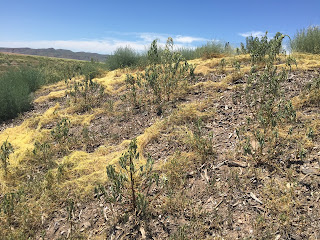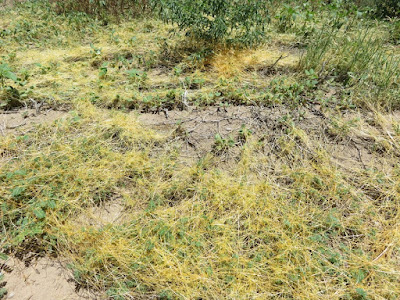 |
| Large mats of dodder parasitizing weeds on a disturbed road side site. (Photo J. French NMSU-PDC) |
For more information please visit Dodder (Cuscuta spp.)
 |
| Dodder in a native landscape setting. (Photo L. Beck NMSU-PDC) |
 |
| Dodder haustoria (tiny sucker-like roots) penetrating the stem of a host plant. The parasite uses these projections to extract the necessary nutrients to survive. (Photo J. French NMSU-PDC) |
 |
| Small clusters of dodder flowers forming along the stem. Each flower will produce a small seed pod with 2 to 4 seeds. (Photo J. French NMSU-PDC) |

No comments:
Post a Comment